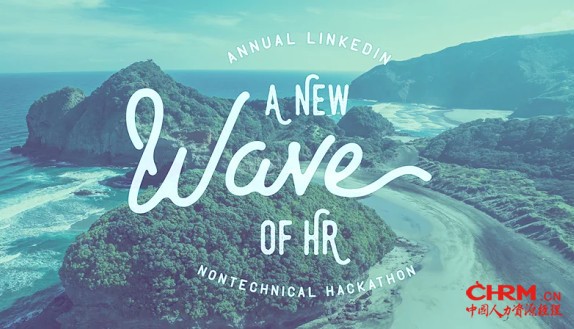
A year ago, I knew very little about HR. I know more today than I did then, but I’m by no means an “expert.” Perhaps that’s the premise of this post: that good ideas can come from anywhere – and take you anywhere.
It was the end of my sophomore year at Yale last May when I created a linkedIn profile. Two months later, I was in San Francisco interning at a venture capital firm and got an InMail inviting me to the linkedIn HR Non-technical Hackathon. Intrigued by the idea, I texted my friend Summer Wu and we decided to sign up as a team.
HR was a relatively new field to us. My (limited) work experience at the time was mostly in venture capital and consulting, and Summer’s was in software engineering. But that’s precisely why we signed up. Sometimes the mindset of an outsider is just what’s needed to provide fresh insight into solving a tough problem.
For our hack, we delved into the problem of low retention rates of interns who receive a full-time offer after their internship. about an hour into the hackathon, we found a report that said only 32% of interns who receive a full-time offer at a company will actually accept the offer. So we spent the next eight hours trying to figure out how to convert the other 68%.
Those eight hours are mostly a blur at this point – series of edited and re-edited slides, product mockups, consumer surveys, and spontaneous brainstorms. In the end, we came up with [in]finite, an app that creates an open and seamless channel of communication between an intern and her company, and allows the company to develop a clear understanding of the intern’s long-term goals. We felt that accomplishing both of these would address many of the issues that influenced interns to decline their full-time offers.
To our luck, the judges were just as excited about [in]finite as we were and selected it as the winner. Yet what happened after the competition is what surprised me most. Steve Johnson, one of the judges (and at the time linkedIn’s VP of User Experience), reached out and put me in touch with Allen Blue (one of linkedIn’s co-founders) after learning about my interest in finding ways to use linkedIn to unleash economic opportunity for people who need it most. Allen was directing a small team which Steve thought I would enjoy being a part of.
The team is part of a larger initiative at linkedIn called the Economic Graph -- which is a digital map the global economy. When it's complete, it will include every member of the global workforce and their skills, all open jobs, all employers, and all educational institutions. Right now we’re using the Economic Graph to narrow skills gaps and improve economies.
The team was started with the goal of completing the Economic Graph in one city. This meant figuring out how can we get every worker (not just white-collar workers with four-year degrees) in that city onto linkedIn and help them realize their potential using the linkedIn platform. I’m lucky enough that after chatting with Steve and Allen, I was able to join the team last September. Since then, I’ve been working with this small group of awesome people to further the company’s mission and vision. You can read more about our work here.
It’s now been almost 11 months since I joined the team, which is crazy to think about. We’ve accomplished and learned a lot together, and we’re one step closer to making the Economic Graph a reality. A little over a year ago, I hadn’t heard about the Economic Graph and didn't have a linkedIn profile. Now I’m working with the Economic Graph team to help thousands of individuals make profiles of their own. Perhaps what’s even more crazy is that this all started with the HR Hackathon. It’s proof that good ideas can come from anyone, and those ideas can take you anywhere. If you’re an intern in the Bay Area this summer, take a look at this link and apply for this year’s hackathon. I’m excited to see where your idea takes you.